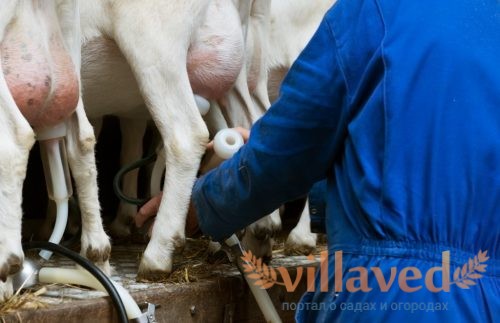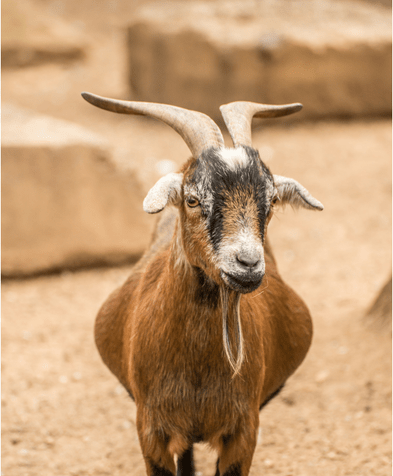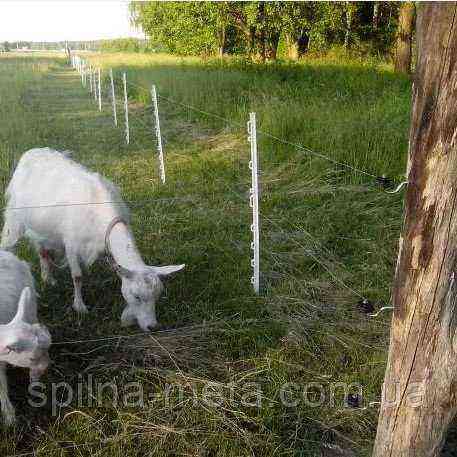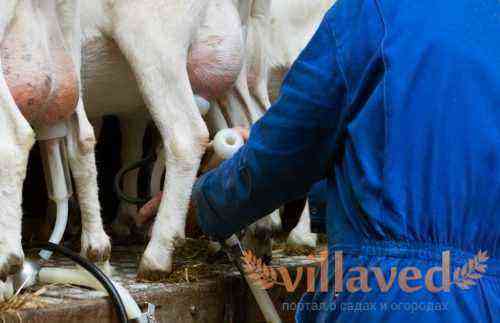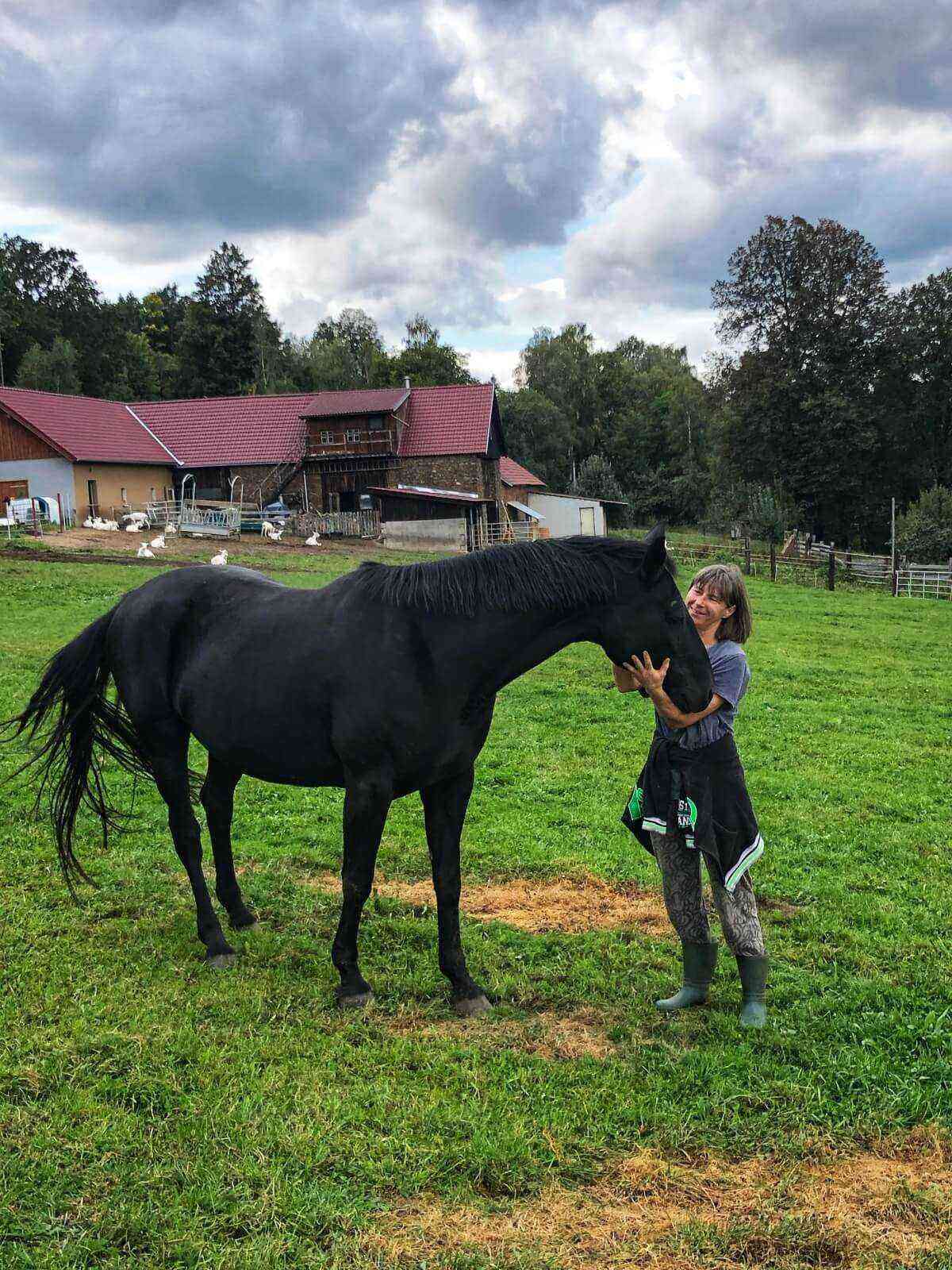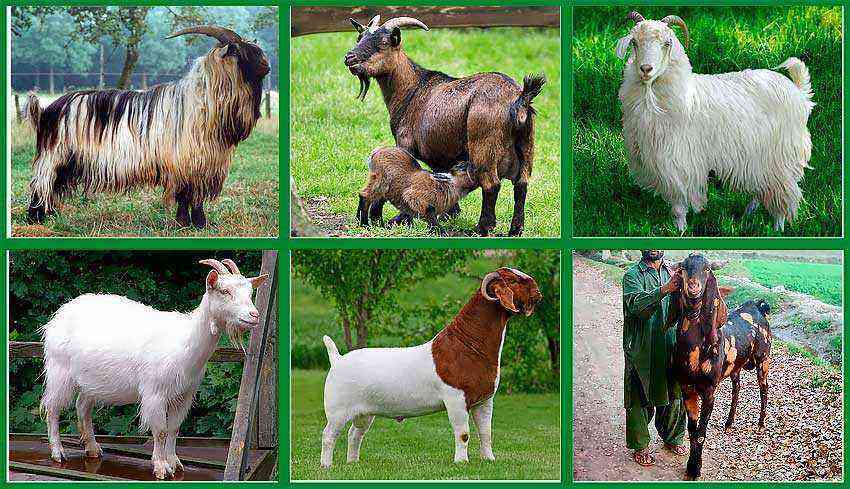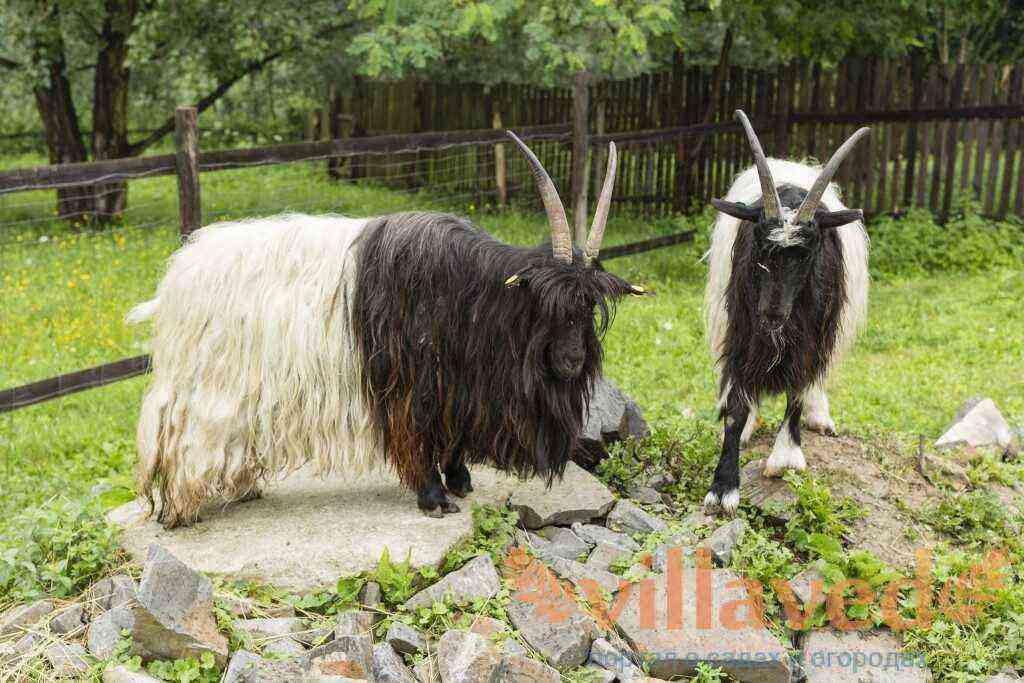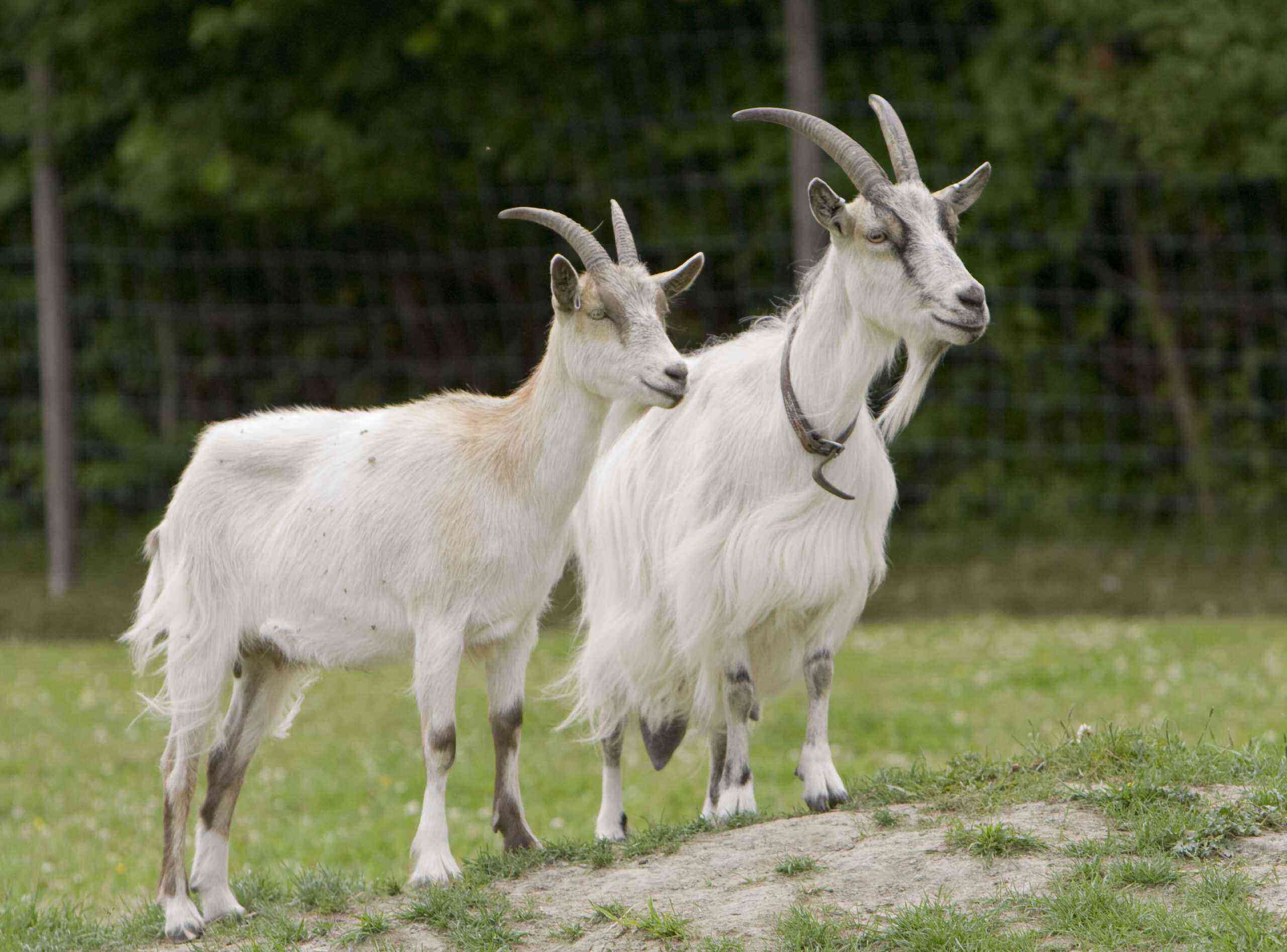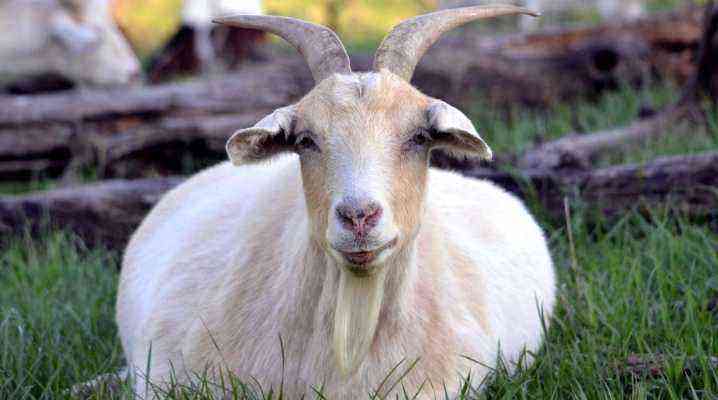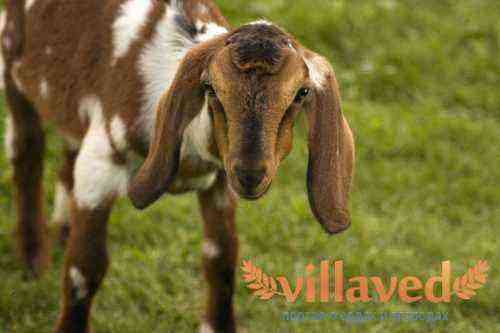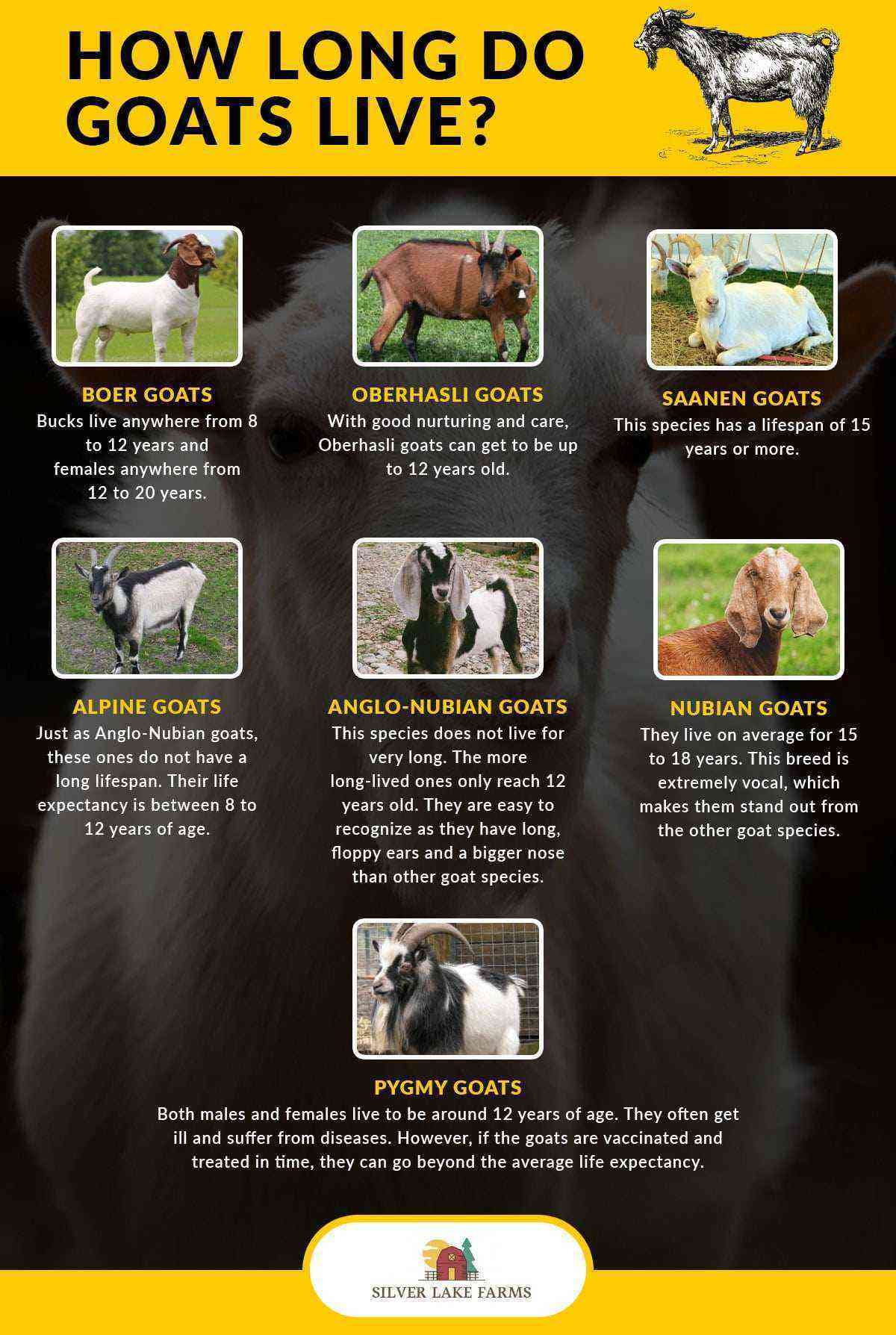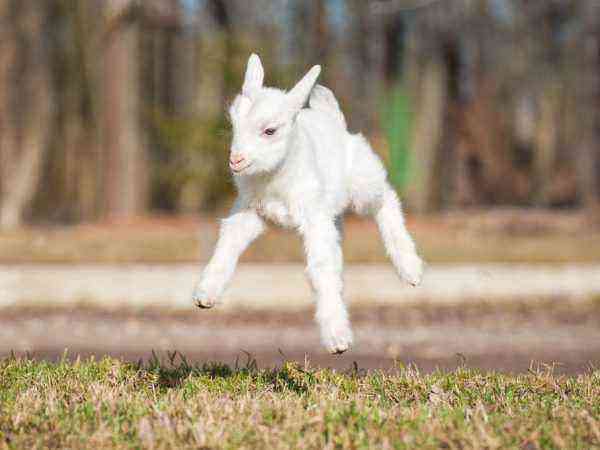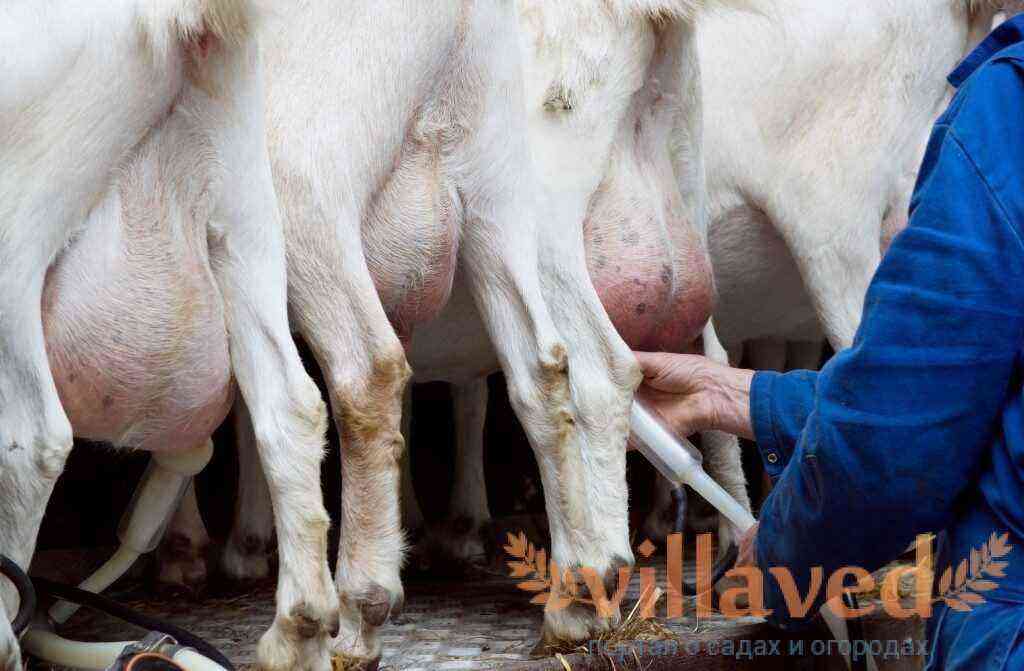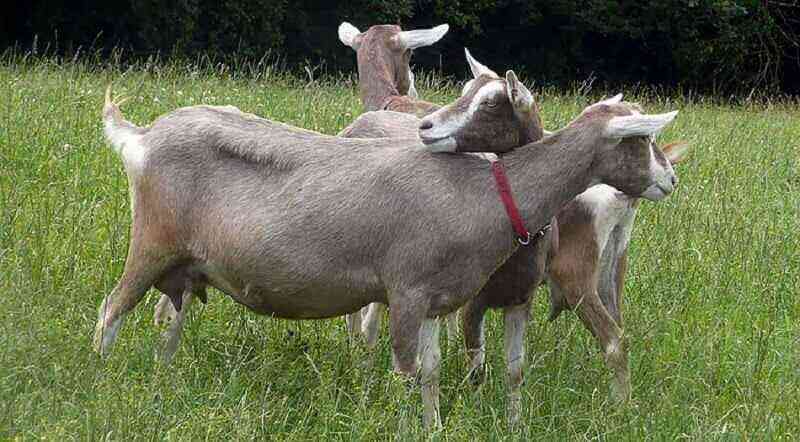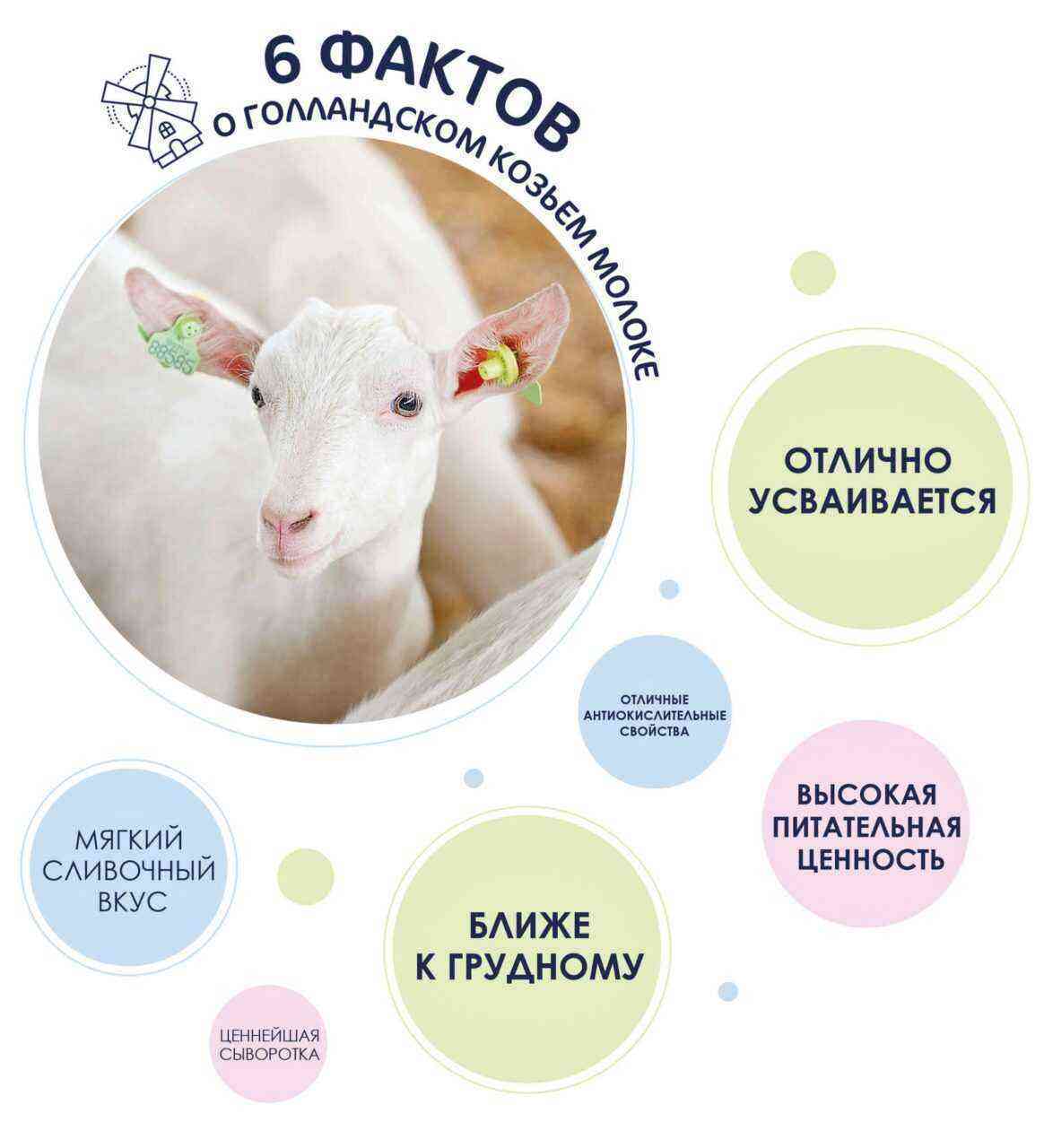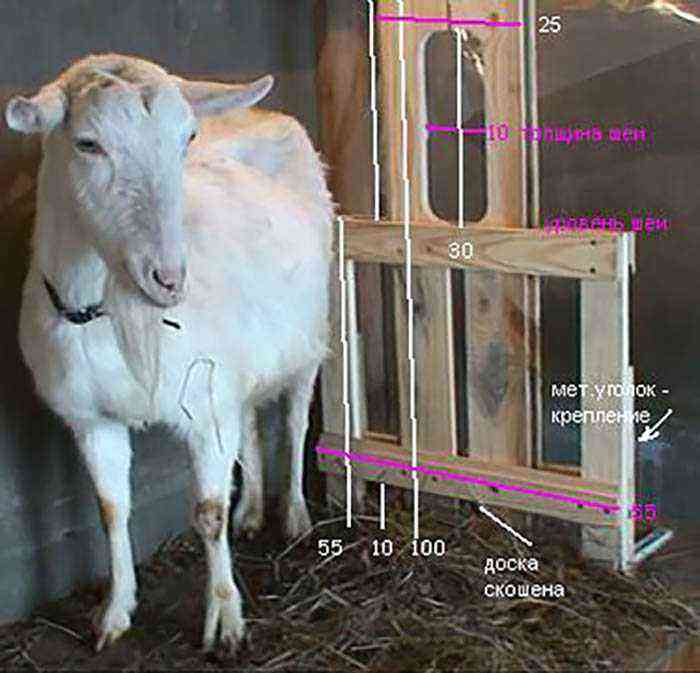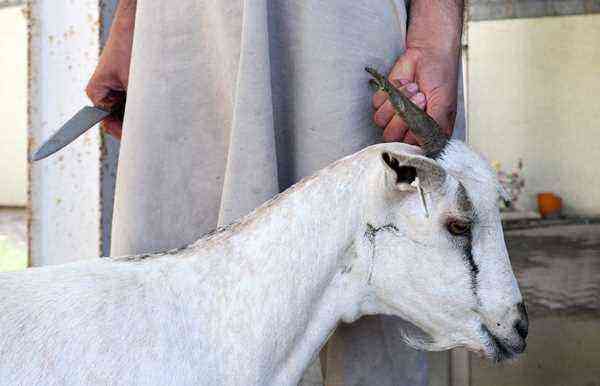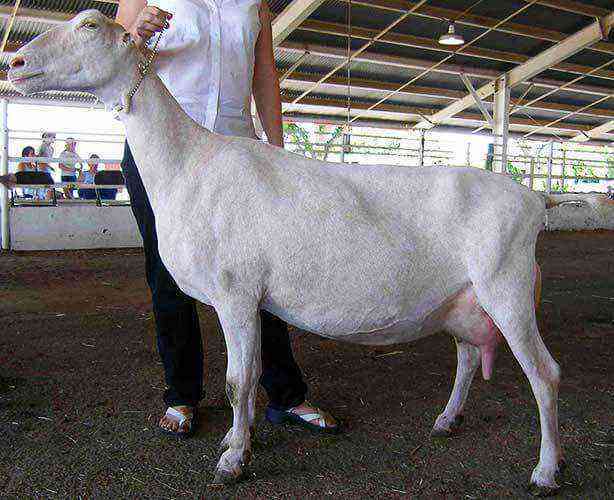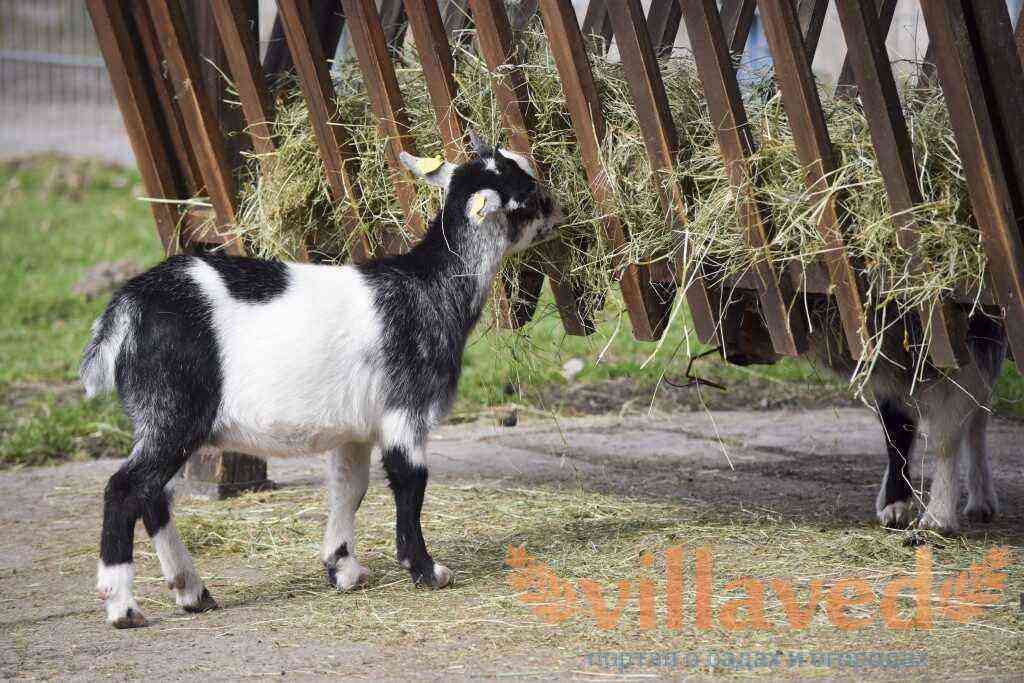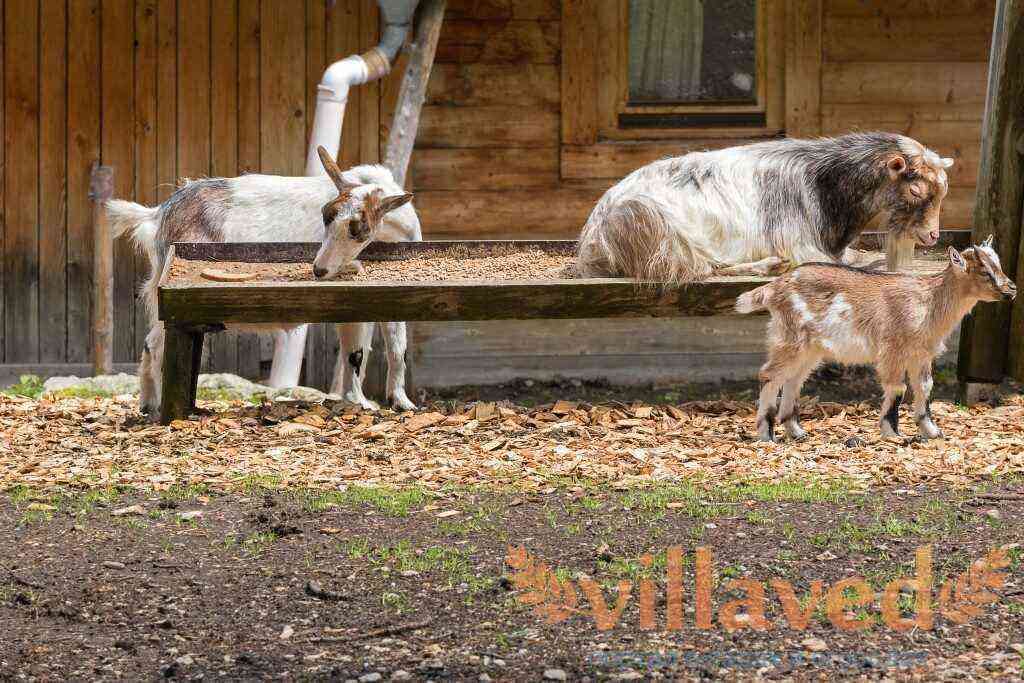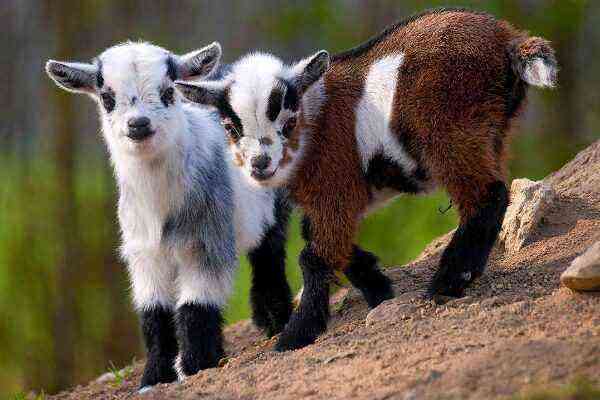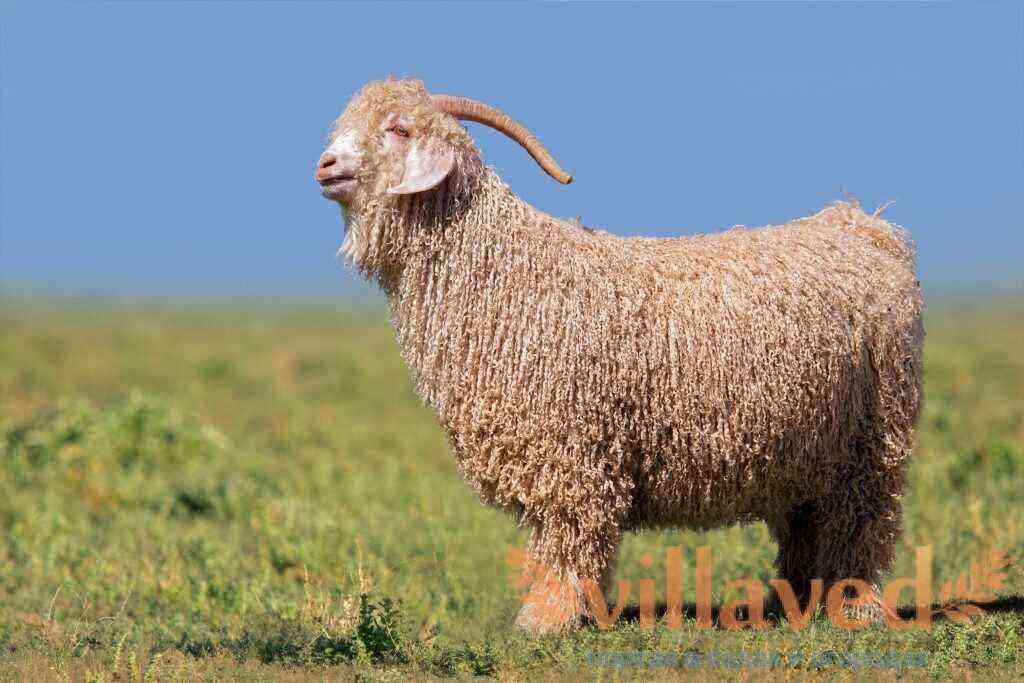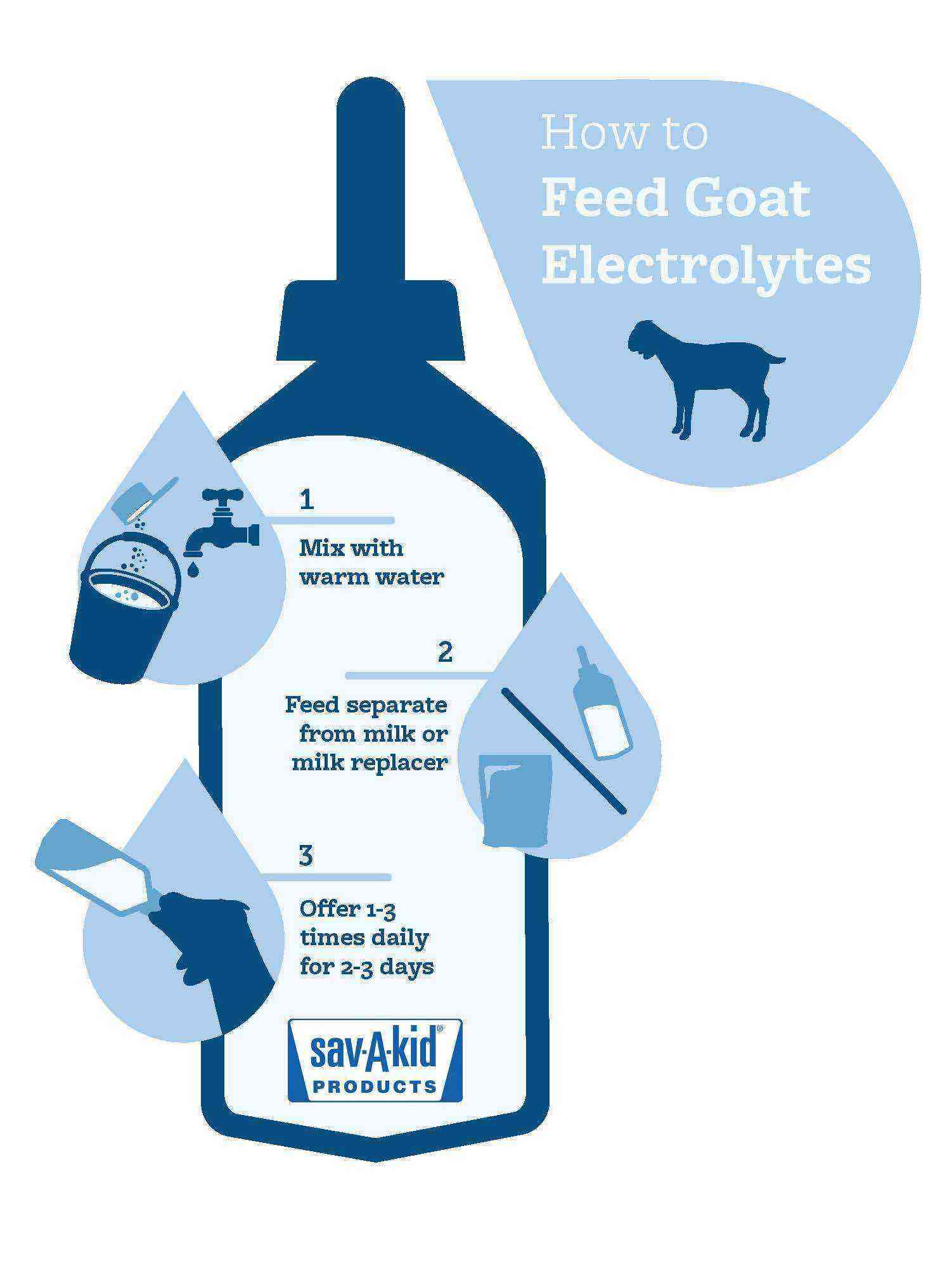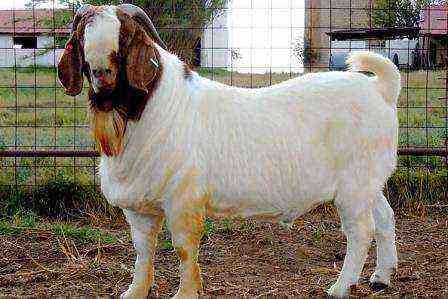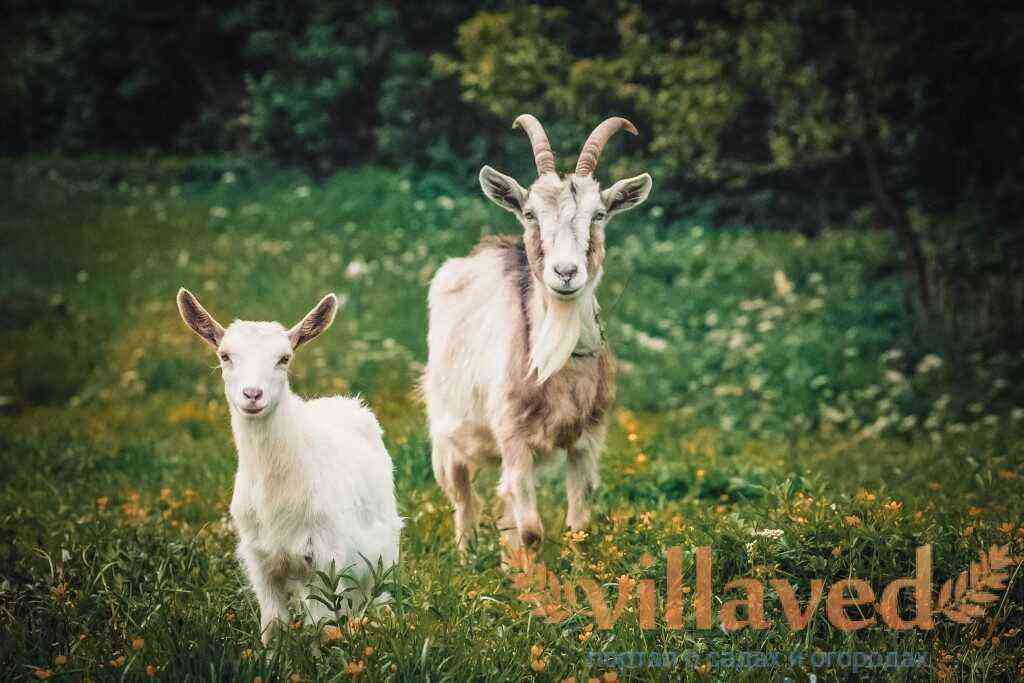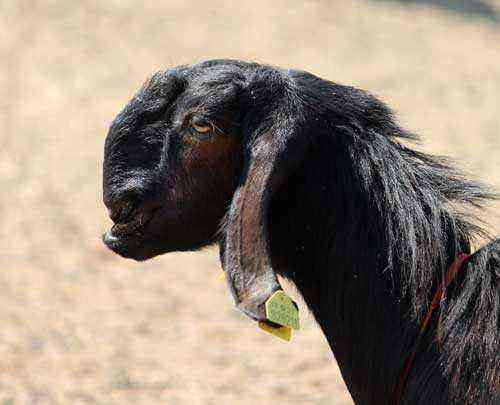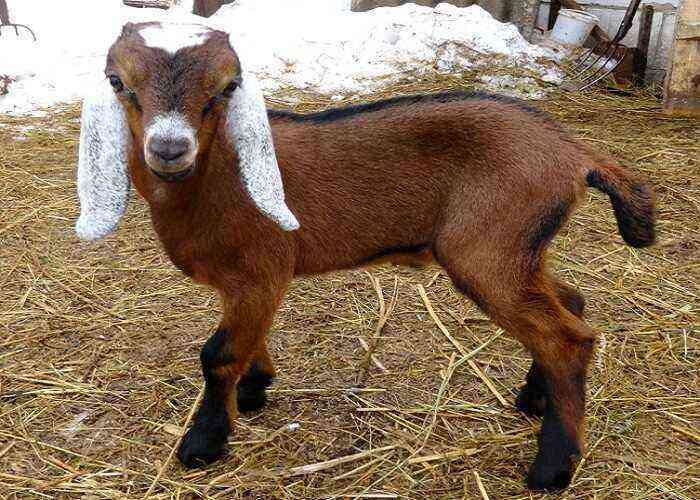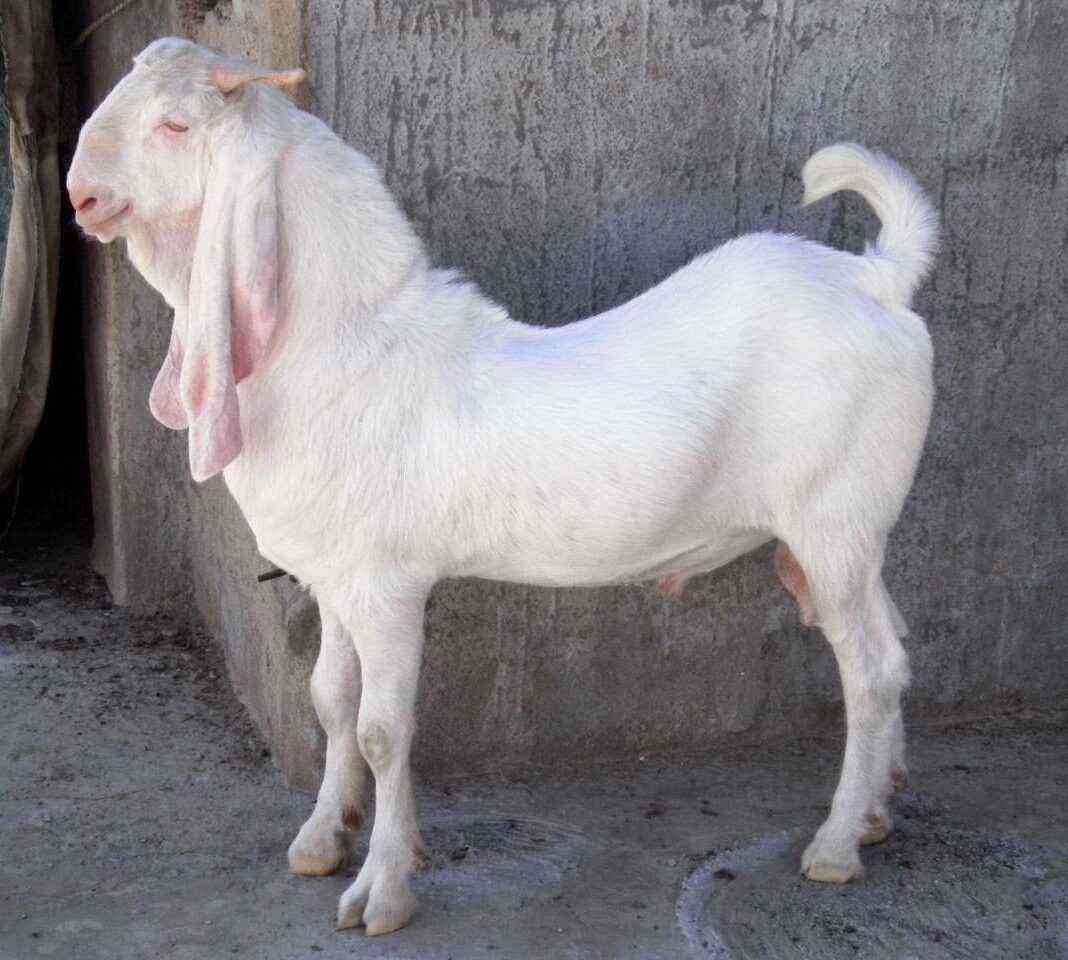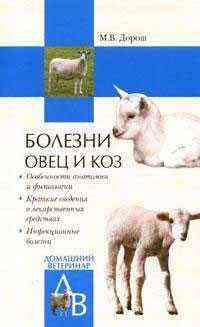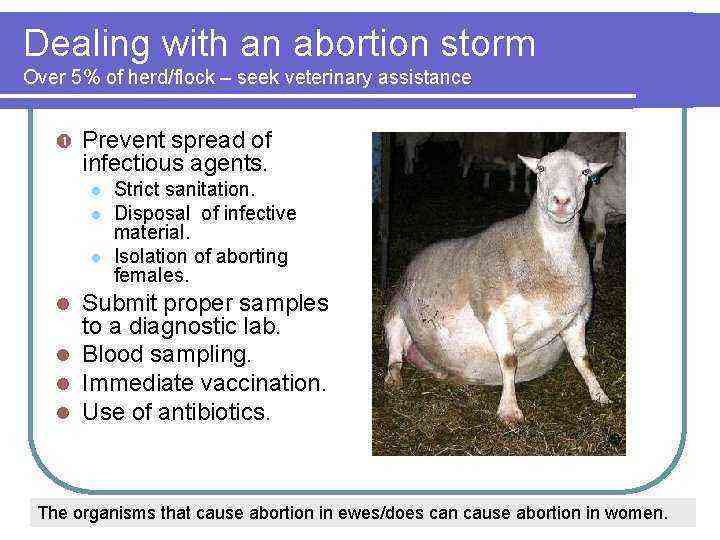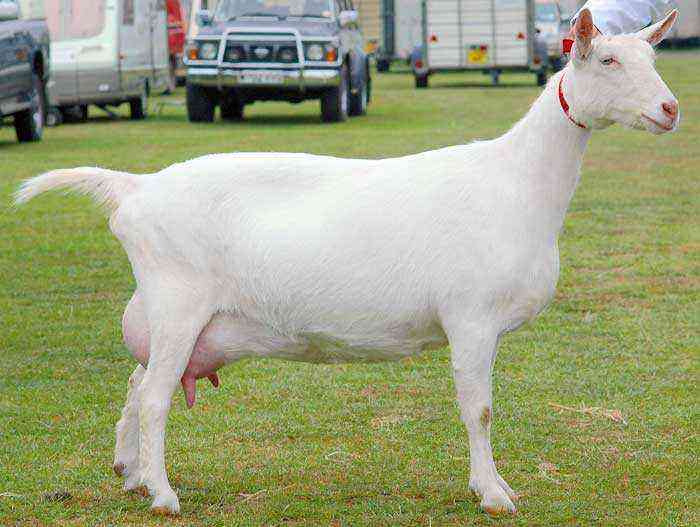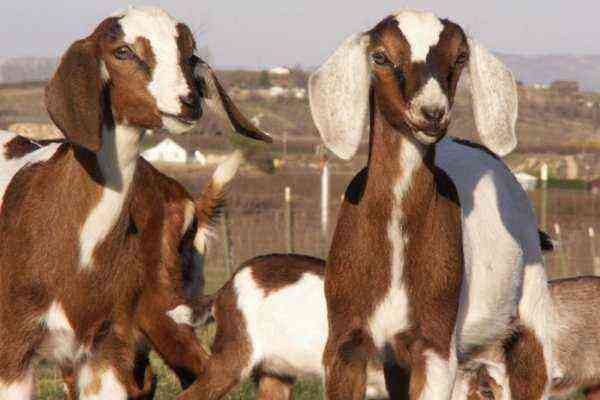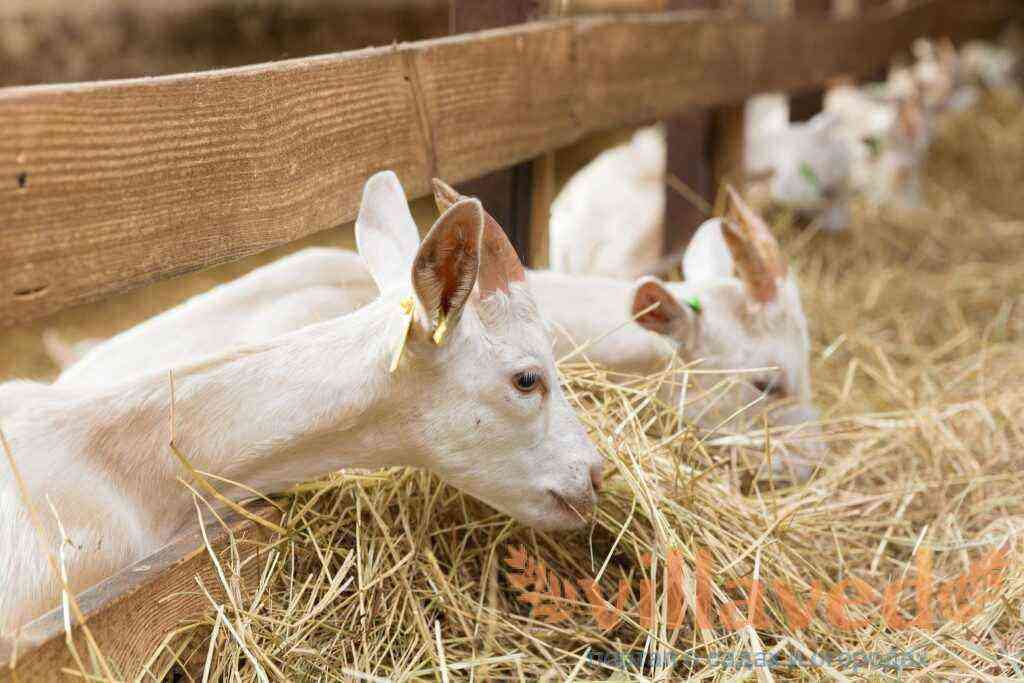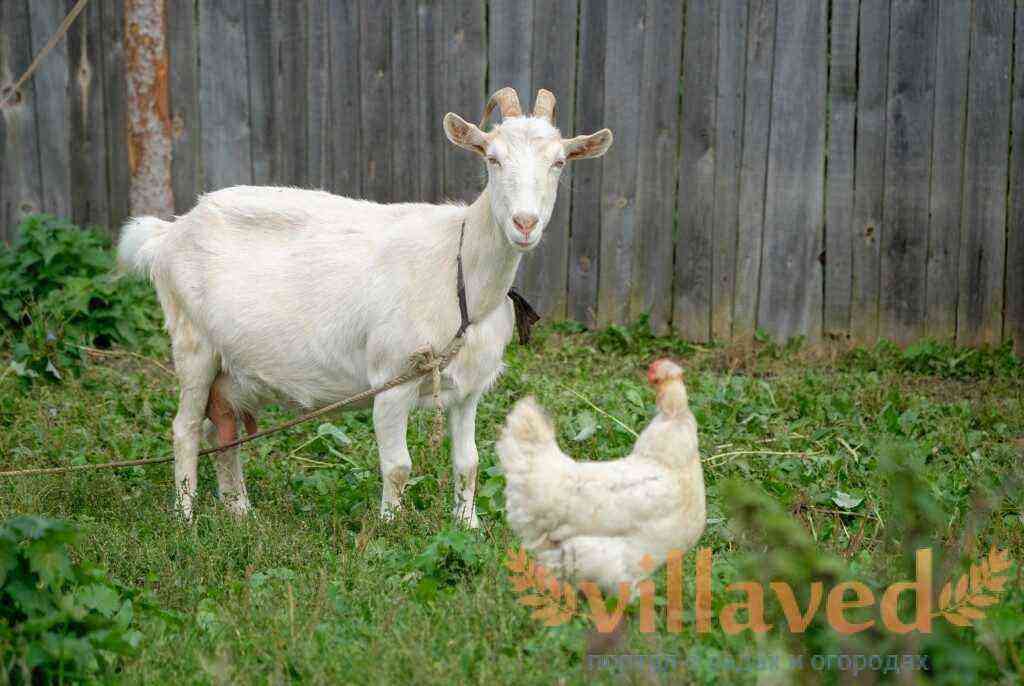When there is no way to keep a cow, but they want milk, farmers buy a goat. But even among animals of dairy breeds there are specimens with low milk yields. And among meat and wool breeds, high-yielding goats are not even found. And in order to choose the right animal with high milk yield, you need to know certain rules.
dairy goats
The content of the article:
Milk goat selection
The first thing to do is to find out what breed of animal the seller is offering. If the seller does not know this information, or hides it, this is an alarming sign. There is a high probability that a goat purchased from such an owner will not be high-yielding. In the event that the breed of the goat is known, the farmer should make sure that the animal is of a dairy breed. The classic representatives of the dairy direction of goat breeding are the Saanen, Alpine or Russian breeds.
Not only the origin of the goat is important, but also its appearance. Dairy animals have a strong constitution, a straight and wide back – if you put a ruler on it, it will run parallel to the ground. The chest is wide and deep, with rounded ribs. The belly is also rounded, but not pendulous. The legs are not long, with strong hooves (without cracks), the hind legs are distinguished by developed muscles and are spaced wider than the front ones due to the udder.
Special attention is paid to the udder. In goats of dairy breeds, it is round or elongated, pear-shaped. The udder should be elastic and not sag. After milking, it changes its shape, decreases, and clutches appear on it – like on an empty bag. If this does not happen, then the udder is not elastic enough, and milk yields will be small.
In dairy breeds of goats, the nipples are of medium length, diverge to the sides. The udder should not sag, otherwise the teats will begin to appear earthy during milking, which will cause irritation. When a goat walks, and the udder hangs evenly and does not hang out, this is also a sign of milkiness. Milk veins are thick and visible to the naked eye. The thicker they are, the higher the milk yield.
Dairy goat breeds
There are certain breeds of goats that are distinguished by considerable milk yield and high quality milk. It is among them that it is worth choosing an animal for purchase. Not all of these breeds are suitable for keeping in the local climate. Some require careful grooming, while others are picky about feed. But there are some that are suitable even for an inexperienced goat breeder.
Saanen goats are rightfully considered the most convenient for keeping. They have a long body, a graceful and elongated neck, thin bones. Both goats and goats are hornless. The hair is white. These animals are fertile, the ratio of queens and kids is 1 to 1,8-2,5. Kids are early maturing and wean from the udder already at the age of 2 months. Goats of the Saanen breed give 4-8 liters of milk per day, which is equal to 600-1200 kg per year. Lactation lasts 8-11 months a year.
Toggenburg goats are also recommended for beginner farmers. These animals will appeal to those who live in cold climates. Goats of this breed do not like heat, but they easily tolerate cold, and are very unpretentious. They are also prolific, and bring 2-3 kids per lamb. They give 3-6 liters of milk per day, or 400-1000 liters per year.
Maintenance of dairy goats
Proper maintenance is important for increasing milk yield and improving milk quality. In summer, goats are recommended to graze. The grazing area should be clean, not swampy. It is not recommended to graze goats in hot, rainy or cold weather. Another farmer should ensure that goats do not eat vineyards or young gardens.
In winter, early spring and late autumn, these animals are best kept in pens. Dairy goats are fed with meadow and bean hay, succulent feed (in particular, root crops), wheat and rye bran and oats (whole or oatmeal, rolled oats). In order to increase milk yield, sometimes special premixes (vitamin supplements) are added to the diet, which increase the volume of milk received. It is impossible that the hay was rotten or overdried. It is worth adding pre-prepared branches of trees to the diet – willow, maple, mountain ash, etc. Goat breeders start harvesting from June, July.
During the cold season, goats are kept in spacious, dry pens, the floor of which is covered with soft and dry straw. These animals need daily walking – at least 1-2 hours a day, preferably 3-4 hours. They are not recommended to be released outside only in severe frost or with wind and snowfalls. In the spring, grazing does not begin until the soil dries out, so that the animals do not trample it and clog the young vegetation.
Types of milking and preparation for milking
There are two options for milking – immediately after lambing, or 3-4 months after weaning the kids from the udder. The first option is more difficult for inexperienced goat breeders, but brings more milk. The kids weaned from the udder are fed with fresh mother’s milk, sometimes with the addition of vitamins necessary for growth. In the second case, the goat is milked only when the cubs no longer need milk feeding.
In the event that excess milk accumulates in the udder, an intermediate option is possible. Before feeding the kids, part of the milk is given off, after which the kids are allowed to go to their mother. But this option is complicated by the fact that it is necessary to milk enough milk so that it still remains enough for feeding. Otherwise, the kids will be frail and may not survive to adulthood.
Goats need to be carefully looked after. Before milking, its owner must wash the udder and carefully trim the wool from it. For washing, clean warm water is used, to which a small amount of iodine is added. After cleaning, the udder is thoroughly wiped with a soft and dry towel. Inexperienced goat breeders are advised to carry out milking on a machine with the necessary clamps so that the animal stands still.
In order to teach a goat to stand still during milking, you need to follow a few simple rules:
- Adapt a separate pen for milking, to which the animal is accustomed
- Remember to wash your hands and cut your fingernails before milking.
- To cut hair from the udder in order not to accidentally pull the hairs – this causes sharp pain to the animal.
- Feed and water the animal before milking – feed should be enough for the entire time of milking.
- Praise and feed a goat after milking – these are intelligent creatures who have a need for affectionate treatment, and who respond correctly to praise.
- Teach a goat to stand still 2-3 months before lambing.
- Constantly massage the udder and teats so that they become more elastic and the goat gets used to the touch of the owner.
milk goat milking
In the summer, when the goats are pastured, they are milked at least 3 times a day. Due to the abundance of juicy and fresh food, milk is produced in large volumes. It is necessary to milk according to one schedule. If you do this earlier or later than the usual time, milk yields will decrease. In winter, early spring and late autumn, when the food is drier and poorer, they milk two, less often three times a day. The conditions of detention and diet have a decisive influence on milk yield.
There are two main ways of milking – manually and with the help of a milking machine. The manual version is cheaper, but difficult to master and requires certain skills from the goat breeder. In addition, it is not suitable for those who own a large number of goats. The cluster, in turn, provides cleaner, hygienic milking, it is quick and easy to use, but it requires certain purchase and maintenance costs.
For manual milking at home, the following method is used. Pinch the nipple with the thumb and forefinger until milk appears. At the same time, it is pulled down and slightly to the side. After that, milking begins with rhythmic movements. Lack of rhythm or rough handling of the udder reduces milk yield and adversely affects the health of the goat. The first jets of milk contain dirt and bacteria, so they are put into a separate container.
The milking machine is much easier to work with. All you have to do is attach the milking cups and turn on the pump. There are models for both home and industrial use. From domestic samples, you can choose the following models: “Squirrel-1”, “Squirrel-2”, “Doyushka” or “Burenka”. It is also possible to assemble such a device at home, but this will require certain knowledge in mechanics and engineering.
Conclusion
Choosing a dairy goat is actually not as difficult as it seems. Even not the most experienced farmer is able to distinguish a high-yielding goat by certain signs. Purchasing won’t be a problem either. Indeed, on the Internet there are ads of the following content:
“I will give a homemade, not thoroughbred goat in good hands. Is free. Export is at your expense.
And among these animals come across those whose milk yield is very good. But it is important to remember that the quality and quantity of milk received depend, first of all, on care.
